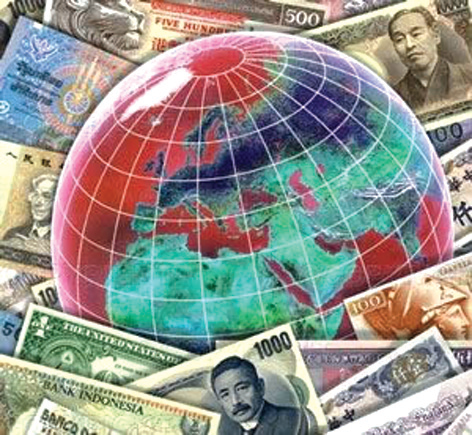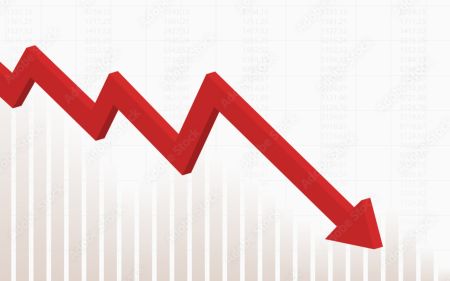
By Sandip Nepal
The year 2012 remained gloomy for the entire seven billion plus world population in terms of economic growth and prosperity. With world economic leaders like the USA, Eurozone and China not acquiring the ‘expected status’ for the year, i.e. 2012, amidst spiking issues like unemployment, inflation and debt crisis regimes, prospects for 2013 do not look encouraging at this point of time.
Concerned over the ongoing austerity measures, high unemployment rate and lower business confidence combined with weak market sentiments in core global economies like the USA and Eurozone, the World Bank (WB) has lowered its forecast for 2013. Market analysts and global institutions, pioneering in economic forecasts, are coming up with new lowered growth forecasts for the current year in line with lower than expected manufacturing and trade indicators coming from both sides of the Atlantic. The world economy was initially expected to grow by 3 percent in 2013. However, the new growth forecast based on the current and prospect scenario has come out to be 2.4 per cent, lowered by 60 basis points from the initial forecast.
Similarly, amidst reduced global growth, market analysts and economists from around the world have lowered their growth forecast for the ‘land of the rising sun,’ i.e., Japan, US and the more vigilant economy, the Eurozone. It is believed that the second year of contraction in the Eurozone will have a tremendous impact on the global economy and could act as a reverse-catalyst in the global economic atmosphere, measured by Global Purchasing Managers’ Index or any other global index. Having inter-twined relationship with economic superpowers such as China, Eurozone and the US, emerging economies like India, Brazil, Mexico and other East-Asian economies fear that they cannot remain unaffected by the contraction in the economic environment of the world’s economic hubs. However, developing economies from around the globe are expected to expand at the rate of above 5.5 per cent in 2013.

The World Bank has already warned against the fragility and vulnerability of the global economy in the remaining months of 2013. On the other hand, the report has also emphasized that the magnitude of economic downside will be at decreasing rate compared to recent precursor years. If we turn back and scrutinize 2012, European measures, reforms and policies to cushion the financial/debt crisis in the single economic bloc have not been able to provide economic surge or even correction to the ongoing recession. At a time when financial and political agendas have not been facilitating economic improvement in the single currency bloc, issues related to spending cuts and tax hikes in the US, diplomatic tensions between Japan and China affecting trade environment, and ‘not so good’ manufacturing and industrial indicators coming from the US and China are feared to cloud whatever little optimism remains for the ongoing year.
Global EconomicGrowth Forecast for 2013
Considering the gloom in the world economic regimes in 2012 and the grayish ongoing global economic performance, the US in 2013 is forecasted to grow by 1.9 per cent. With political tensions mounting between two core Asian economies, Japan and China, amid affected Japanese trade in automobiles and related industries, and with contraction in one of the largest export sectors, the Japanese economy is expected to witness a meager growth of only 0.7 per cent in 2013. Unlike the economies mentioned above, the Chinese economy with its improving manufacturing sector, satisfactory flow of Foreign Direct Investment and export data has been projected to grow by an attractive 8.4 per cent in 2013, though the figure is 20 basis points lower than the previous projection for the year. Further, increasing Chinese appetite for FDI outflow also exhibits the magnitude of its economy. Moving on to emerging economies, the growth rates for India, Brazil and Mexico have been projected to be 6.1, 3.4 and 3.3 percent, respectively. With economies like the Eurozone and the USA not really supporting these emerging economies, these expected growth rates could be deemed satisfactory.
Nepali Economy in 2013 and Global Influence
Nepali exports have seen a decline in recent months, thanks to the economic slowdown in the Euro Area and a mild US economy. Nepali industries like, garment, herbs, handicraft, carpet, metal-wood and other related sectors are hit hard by the global meltdown. Combined with the international pessimism, ‘below-par’ agricultural and industrial performance is also contributing to drag the economy towards austerity. In line with the current and forecasted economic indicators, the WB has forecasted Nepal’s economic growth rate to be 3.8 per cent for fiscal year 2012-13, which is 80 basis points lower than the actual economic growth rate for fiscal year 2011-12.
The key issues contributing to lowered growth forecast could be attributed to the ongoing constitutional crisis, poor investment environment (in terms of FDirectI) and infrastructural bottlenecks in the country. Besides the ongoing political instability and poor market sentiments, inadequate and inefficient public expenditure, too, has been hampering the economic outlook, which, in turn, may further contribute to downgrading the current forecasted growth rate. Remittance, working as a key source of financing, incorporates around 22 per cent of the national Gross Domestic Product (GDP). At this point of economic junction, as remittance has been facilitating to finance imports, covering trade deficits with counterparts, the year ahead could also see an optimistic inflow of funds, taking into account the numbers of Nepalis working abroad, especially in the Gulf countries.
With the WB having already lowering Nepal’s growth forecast for fiscal year 2012-13 and remittance acting as an economic catalyst, it’s political leaders and government authorities who could possibly look into the matter and plug the loopholes in the operating environment, eventually facilitating, promoting and simplifying investment grounds for national and international market participants. Only time would tell what the government would do to address the situation and improve the country’s GDP growth rate, lower dependency on remittance and international debts for the year and henceforth.
The author is Assistant Manager, Research & Development Department, Mercantile Exchange Nepal Limited, Nepal.





















